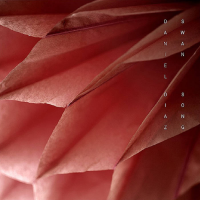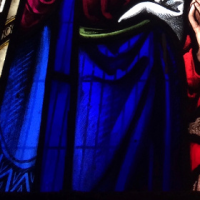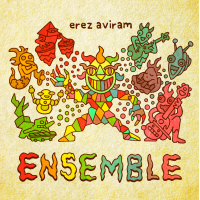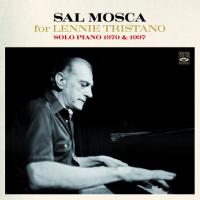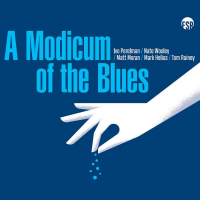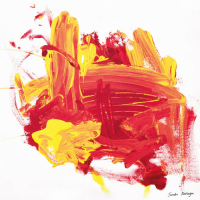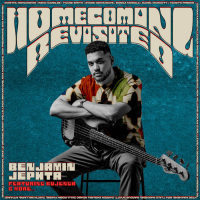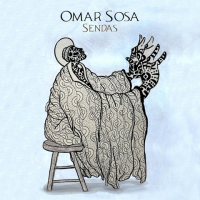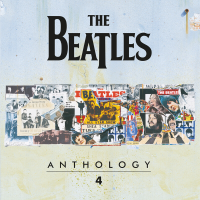Home » Jazz Articles » Album Review » Daniel Diaz: Swan Song
Daniel Diaz: Swan Song
Opener "Otoño y Martes (love theme number 1)" finally settles into a tango groove, with strings and piano in a passionate embrace. Tango (and what is probably Olivier Manoury's bandoneon) reappear on "Antefinal" in slow form, which opens with disembodied radio voices. Identifying individual players can be tricky, because although Diaz lists them all and praises their contributions, the tracks aren't broken down. Which may be part of the point, as this is much more ensemble music than a vehicle for soloists—they're meant to sing, not demonstrate technique. "Erik Satie's Farewell" has the air of a French chanson (Diaz playing accordina? It's one of several reedy instruments listed that sound like an accordion). "Same Old Song" is a saxophone ballad, while "Harold's Lake" has a long fade with an overdubbed duet by cellist Damian Jarry. "Resumé (Swan Song)," the final track on the main album, features flugelhornist David Lewis.
The five bonus tracks add an additional half hour of music. They're a bit longer on average, but the real difference is the live in studio feel of the music. I suspect the place names in the titles may be geographic recording locations rather than poetic evocations of place. "Palermo" is a jazz tune with saxophone, Patrick Bebey's Fender Rhodes, Diaz's bass, and one of the several drummers listed. It definitely sounds like everyone was in the same room at the same time, with group interaction and more explicitly improvised solos. "New York Polonaise" (another dance rhythm) had to involve overdubbing—Diaz plays piano and bass (plus guitar?)—but featured soloist violinist Line Kruse plays very freely. "Gandolfini Etc." adds a new color in the form of Luis Rigu's quena (the Andean flute heard on Simon & Garfunkle's "El Cóndor Pasa (If I Could)"). Closer "L.A. Vignette" sounds like a noir vision of Los Angeles, with soloists Leandro Guffanti (soprano saxophone) and Kruse's violin commenting over Diaz's piano and bass.
Diaz says Swan Song is the last chapter in a trilogy of albums begun in 1993. I haven't heard the other two, but this album is certainly a fine calling card for his skills as composer, arranger and performer. It's an easy, enjoyable listen, while also containing riches below the surface.
Track Listing
Otoño y Martes (love theme number 1); Os Historicos; Romantica Cromatica; Antefinal; Ganimedes; Erik Satie’s Farewell; Alexis Luminoso; Tristesse Collateral; Same Old Song; Harold's Lake; Resumé (Swan Song); Palermo (bonus track); Neo Zamba (Fin De Siecle) (bonus track); New York Polonaise (bonus track); Gandolfini Etc. (bonus track); L.A. Vignette (bonus track).
Personnel
Daniel Diaz: basses, guitars, pianos, vibes, hang, harmonium, percussion, accordina, charango, ukelele, synths; Steve Arguelles: drums; Patrick Bebey: Fender Rhodes; Gustavo Bulgach: clarinet; Javier Estrella: drums; Leandro Guffanti: soprano sax; Damian Jarry: cello; Line Kruse: violin; David Lewis: flugelhorn; Olivier Manoury: bandoneon; Daniel Miguez: drums; Norberto Pedreira: guitar; Bobby Rangell: sax & flute; Luis Rigu: quena, sikus, flutes; Inor Sotolongo: congas; Miguel Yanover: tenor sax.
Album information
Title: Swan Song | Year Released: 2016 | Record Label: Self Produced
Tags
PREVIOUS / NEXT
Support All About Jazz
 All About Jazz has been a pillar of jazz since 1995, championing it as an art form and, more importantly, supporting the musicians who make it. Our enduring commitment has made "AAJ" one of the most culturally important websites of its kind, read by hundreds of thousands of fans, musicians and industry figures every month.
All About Jazz has been a pillar of jazz since 1995, championing it as an art form and, more importantly, supporting the musicians who make it. Our enduring commitment has made "AAJ" one of the most culturally important websites of its kind, read by hundreds of thousands of fans, musicians and industry figures every month.


